Lifestyle
10 traditional African hairstyles and their significance

One symbol of Africa’s rich cultural heritage is the traditional African hairstyles. It distinguishes one culture from one another.
In ancient African societies, the hairstyle was a significant element. It symbolizes status—economic, marital, and social. It was also used as an instrument of spiritual divination.
Today, many of those traditional African hairstyles have crossed the Atlantic into the western world.
While some are almost extinct, many remain peculiar to their origins. Oftentimes, they even help to identify individuals belonging to certain ethnic groups.
In this article, we made a list of 10 prominent traditional African hairstyles, presenting their historical background & significance.
1. Amasunzu
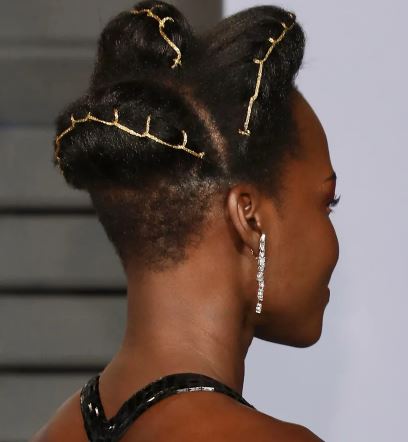
Amasunzu finds its roots among the Tutsi and Hutu people of Rwanda. Dating back over 500 years, this traditional African hairstyle was worn by people of all social and marital statuses. Warriors wore it to signify strength and bravery. Single young girls wore it as a symbol of their virginity.
It was a hairstyle of class as only the traditional elite flaunt it. Amasunzu is a way to beautify the body. It was a symbol of pride for the black hair. This style relies heavily on the body frame of the wearer. It is a collection of rows of hair styled into crescent shapes with sharp contours.
2. Bantu knots
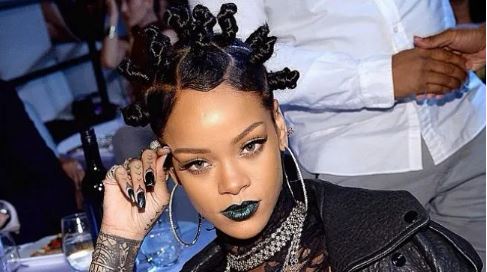
Bantu Knots is a traditional African hairstyle that originated among the Zulu people of Southern Africa. Throughout its existence, women have worn it as a symbol of femininity and status. The Bantu hairstyle is one in which the hair is divided into sections, twisted, and then wrapped to form spiral knots.
Although this traditional African hairstyle originated from the Zulus, Bantu is a word that means ‘people’ in over 300 African languages. Little wonder it has become so popular among Africans and African Americans. In other words, it is an unofficial black people’s hairstyle.
3. Fulani braids
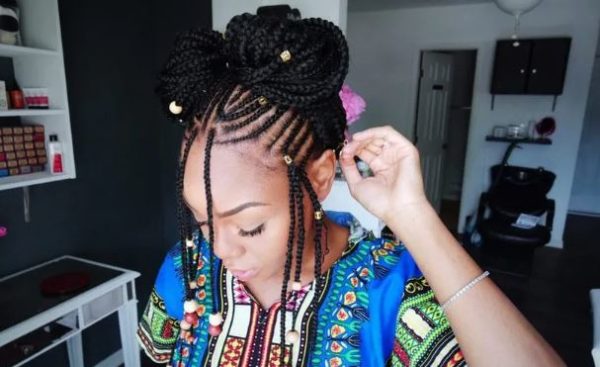
This traditional African hairstyle is indigenous to the Fulani people of West Africa. Having originated among them thousands of years ago, the hairstyle remains a symbol of identity for Fulani women.
Fulani braid is made by parting the hair in the middle (and side). Then, they are braided into tiny cornrows. Most times, wearers adorn them with hair accessories such as rings and beads. This traditional African hairstyle is becoming a fashion trend and gaining attention among other ethnic groups.
4. African threads
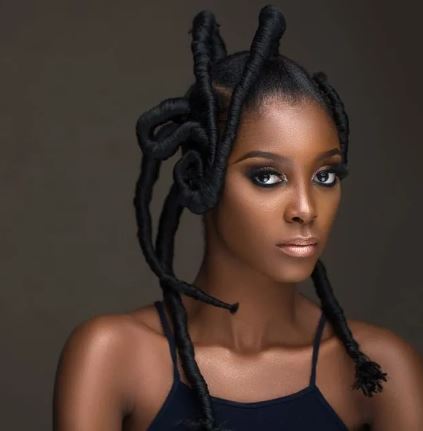
African thread is a very common traditional African hairstyle all over the continent. The use of threads for braiding hair is common among the Yoruba people of southwestern Nigeria. Over time, threads have become popular all over West Africa.
Among the different Africans tribes, threads have diverse names including Los, Eko Bridge, Akula, Sunga, etc. It is a natural hair straightener, which has been a major part of hair care routines for centuries. Depending on the quality of the thread, it can last upward of 6 weeks.
Perhaps, the reason why this traditional African hairstyle has gained global acceptance is because of its versatility. There is no limit to how you can style it.
5. Zulu topknots
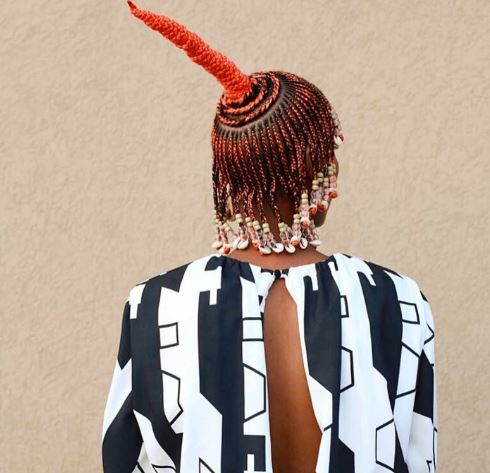
As the name implies, this African traditional hairstyle traces its origin to the Zulu people of southern Africa. In the early centuries, women in these communities used the style as a status symbol—only members of the ruling class wore them.
These days, although still heavily worn by Zulus, Topknots have permeated other cultures, such as the Ethiopians and Somalis. Zulu Topknot is made from hair gathered into knots and stretched into sections with a tie. Some women adorn their knots with jewelry.
6. Ochre dreadlocks
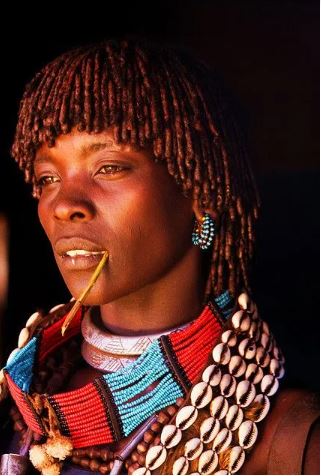
Ochre deadlock is a cultural symbol of the Hamar tribe of Ethiopia. When the Hamar people came to settle in the Omo Valley, they blended into the society of nomads that they met there. Together with these nomads, they invented this traditional African hairstyle and called it ‘Goscha’.
Hamar women create their deadlocks by binding resin with water, sectioning their hair, and using the mixture to style the hair into locks. To add some beauty, the women wear colorful beaded jewelry.
7. Himba dreadlocks
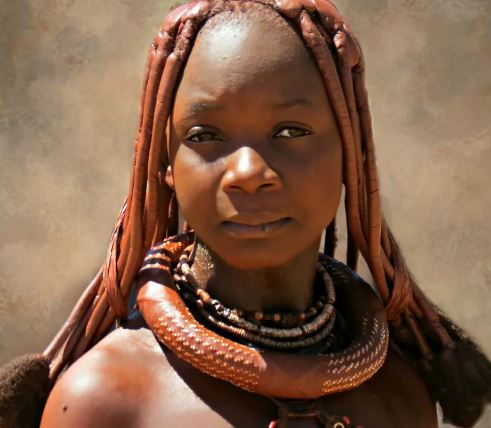
Himba is a tribe in Northwestern Nambia. For the Himbas, dreadlocks symbolize age and life. Himba stylists use a mixture of butter, ochre, and goat hair to create the locks. They also use hair extensions and ornamental accessories for beautification.
Usually, teenagers wear strands of their dreadlocks hanging over their faces to symbolize their entrance into puberty. When these teenagers are ready to marry, they tie these dreadlocks to display or ‘reveal’ their faces.
8. Edamburu
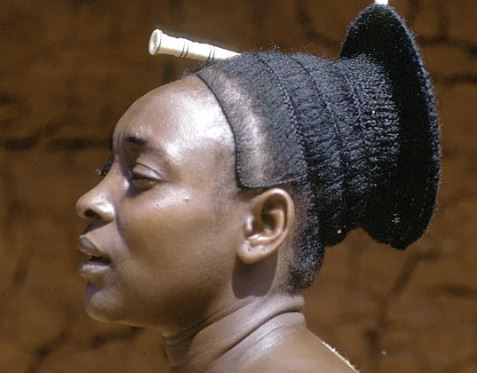
Popularly known as the braided crown, Edamburu is an African traditional hairstyle native to the Mangbetu people of Congo. Edamburu is simply thin braids intricately woven into a crown. The coiffure is impressively used to appreciate the culture of skull elongation among the Mangbetu people.
9. Ngala

Ngala is a traditional hairstyle that is native to the Igbo people of Nigeria. Among the Igbos, it is a symbol of pride and elegance for women. Igbo women usually wear Ngala on special traditional festivals, traditional marriages, and coronations.
This hairstyle is unique. Regardless of the hair texture of the bride, creative hairstylists use hair extensions to work their magic. A key feature of Ngala is the adornment of the style with Igbo beads for added elegance.
10. Sahrawi cornrows
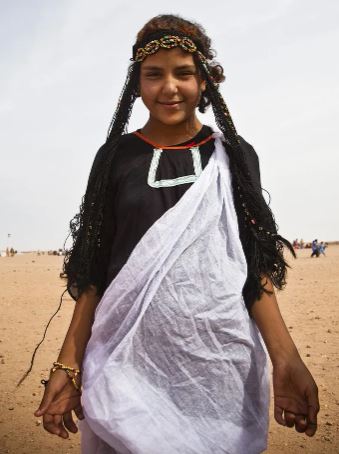
In most cases, they leverage hair extensions to form two smaller braids that run down to the arms. The hair texture of North Africans is usually closer to that of the Westerners. Perhaps, it is because of their close relationship with the Middle East.






